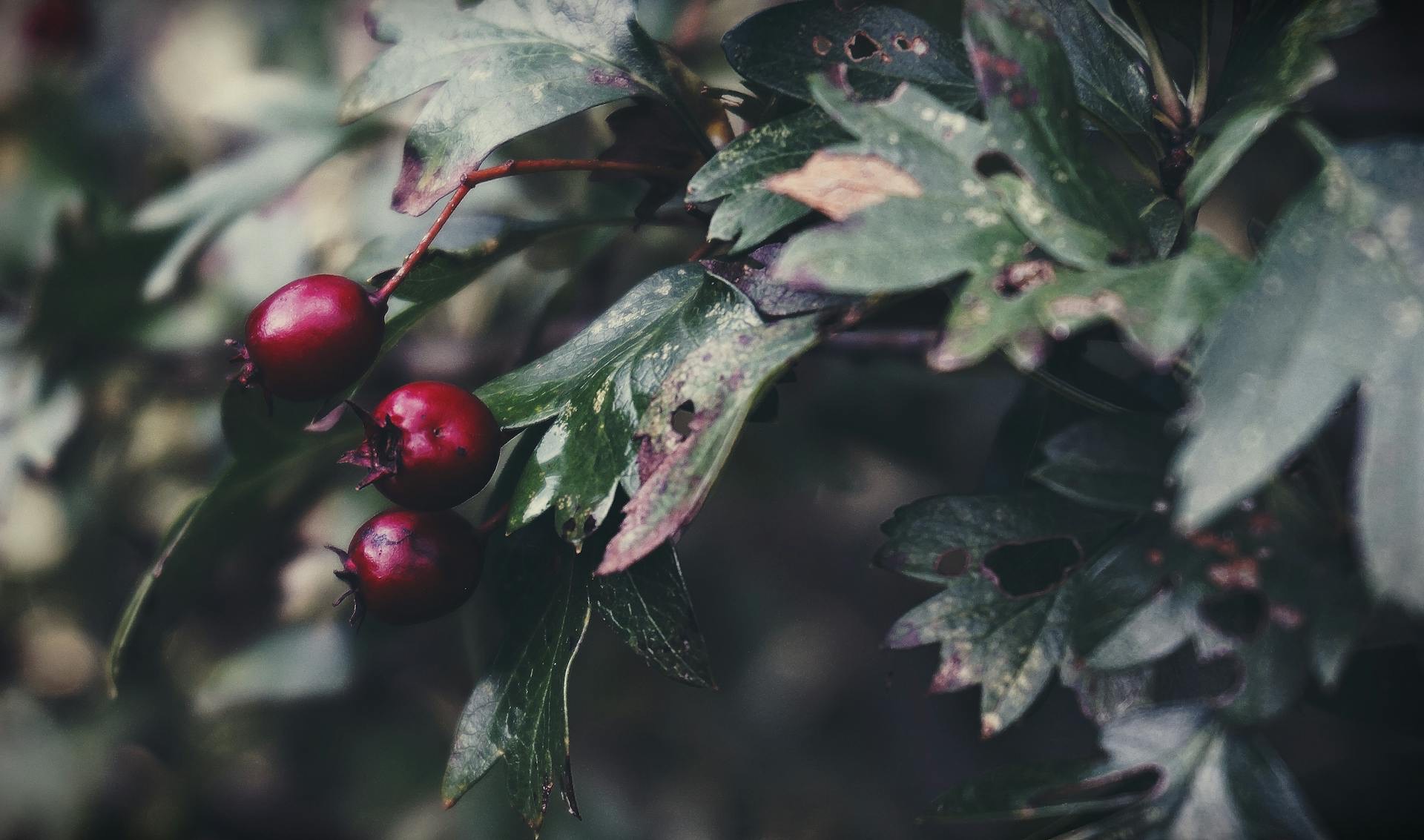Botanical Basics
- Common Name(s): Hawthorn, Maythorn, Mayflower, Thornapple
- Folk Name(s): May Bush, Quickthorn, Whitethorn, Fairy Tree, Bread-and-Cheese Tree
- Scientific/Latin Name: Crataegus monogyna (common hawthorn), Crataegus laevigata, other Crataegus spp.
- Family: Rosaceae (Rose family)
- Plant Type: Deciduous shrub or small tree
- Botanical Description: Dense, thorny tree/shrub growing 15–30 ft tall. Lobed leaves, clusters of white to pink flowers in spring, followed by small red fruits (haws) in autumn.
- Growing Zones/Climate: Hardy in USDA zones 4–8. Tolerant of cold and wind.
- Best Zones for Growth: Temperate regions of Europe, North America, and Asia.
- Habitat & Range: Native to Europe, Asia, and North Africa. Widely naturalized in North America. Found in hedgerows, woodland edges, and scrubland.
Cultivation & Harvest
- Soil & Sun Requirements: Prefers well-drained loamy soil, tolerates clay and chalk. Thrives in full sun to partial shade.
- Propagation: Grown from seed (requires cold stratification), or propagated by cuttings and grafting.
- Companion Planting: Provides shelter in hedgerows; pairs well with elder, hazel, and wild roses.
- Harvesting Guidelines: Flowers gathered in spring when just opening. Berries harvested in autumn after ripening (often after first frost). Leaves can also be collected.
- Drying/Preservation: Flowers and leaves dried in a warm, airy place away from direct sun. Berries can be dried whole or processed into syrups, jams, or tinctures.
Traditional & Historical Use
- Cultural Significance: Ancient Celtic tree of Beltane; associated with fertility, love, and faery realms. Branches were used in May Day festivities.
- Traditional Medicine: Long used as a cardiac tonic in European herbalism. Mentioned by Dioscorides and traditional folk healers.
- Symbolism: Represents hope, renewal, love, and protection. Considered both lucky and unlucky depending on use—sacred to fairies and never to be cut carelessly.
Medicinal & Practical Properties
- Active Constituents: Flavonoids (vitexin, hyperoside), oligomeric procyanidins, triterpenes, phenolic acids.
- Medicinal Uses:
- Heart tonic: strengthens heart muscle, improves circulation.
- Supports recovery from heart failure, angina, arrhythmias.
- Mild sedative, calming to the nervous system.
- Preparation Methods: Teas (infusion of flowers/leaves), tinctures, capsules, syrups, wine, and jams from berries.
- Dosage & Guidelines:
- Tea: 1–2 tsp dried flowers/leaves per cup, steeped 10–15 min, 2–3 times daily.
- Tincture: 30–40 drops, 2–3 times daily.
- Standardized extracts: follow product guidance.
- Safety/Precautions: Generally safe; may potentiate cardiac medications (digitalis, beta blockers). Use cautiously with prescription heart meds. Not recommended in pregnancy without supervision.
Magical & Spiritual Properties
- Elemental Association: Fire (sometimes Air, depending on tradition).
- Planetary/Deity Correspondence: Venus, Mars; deities of love and fertility (Hera, Maia, Olwen). Sacred to fairies and woodland spirits.
- Magical Correspondences: Love, fertility, protection, purification, happiness, marriage blessings.
- Ritual Use: Maypole garlands at Beltane, protective charms hung over doors, fairy offerings, heart-healing spells.
- Symbolism in Divination/Dreams: Suggests renewal, new love, or healing. A dream of hawthorn may indicate approaching change or contact with the Otherworld.
Ecological & Culinary Uses
- Pollinator Value: Excellent nectar and pollen source for bees, butterflies, and other insects.
- Wildlife Uses: Dense thorny branches provide shelter and nesting sites for birds; berries feed birds and mammals in winter.
- Culinary Uses: Berries (haws) used in jellies, jams, syrups, wines, and teas. Young leaves once eaten as “bread and cheese” in English hedgerows.
Household/Practical Uses
- Quick Uses: Living hedge or natural fence, bird habitat, protective charms.
- Notable Traits: Long-lived (can survive centuries), thorny and protective, deeply tied to folklore.
- Special Notes: Traditionally never brought into the house in bloom (considered unlucky), but revered outdoors.

Supporting Notes
- References:
- Chevallier, A. The Encyclopedia of Medicinal Plants
- Grieve, M. A Modern Herbal
- Wood, M. The Earthwise Herbal
- Hoffmann, D. Medical Herbalism
- British Herbal Pharmacopoeia
No comments:
Post a Comment